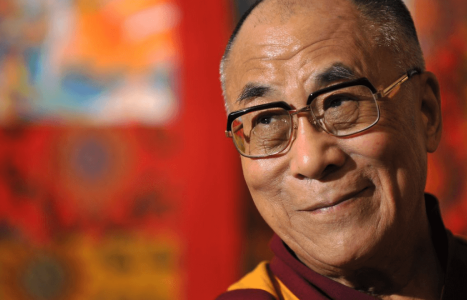-
- What is reincarnation?
- What connects one life with the next?
- How long does reincarnation take?
- Can a person be reincarnated as a dog?
- Does Zen Buddhism believe in reincarnation?
- Are we reincarnated?
- What Does Science Say?
- Video about Tukdam meditation on our YouTube Channel
- Rebirth VS Reincarnation
- Reincarnation of High Lamas in Tibet
- The ways of recognizing reincarnations
- Tukdam Meditation
- Tulku VS Rinpoche
- How will the next Dalai Lama be chosen?
What is reincarnation?
Reincarnation is an ancient concept that is valued by various traditions. It suggests that our consciousness goes through a never-ending cycle of being born, dying, and being reborn. This cycle continues until we gain understanding or enlightenment, ultimately leading to liberation, which is often referred to as Nirvana.
Reincarnation is influenced by ignorance and the actions we take, which shape the cycle of existence. This continuous cycle results in the repeated challenges and difficulties we face in life. Within this cycle, individuals can be reborn in any of six realms. Some realms, such as hell, hungry ghosts, and animals, are characterized by more suffering than happiness. In contrast, the realms of humans, demi-gods, and gods offer relatively happier experiences.
This cycle persists until individuals break free from the grip of ignorance and achieve a state of liberation known as Nirvana.
What connects one life with the next?
It’s not a soul, a self, or a distinct identity; rather, it’s intricate layers of consciousness. This underpins the profound concept of selflessness in Buddhism – the absence of a concrete, self-contained entity.
When the moment of death arrives, the array of sensory experiences comes to a halt. What endures is an exceedingly subtle form of mental consciousness. This minuscule yet potent consciousness retains the imprints of our deeds, known as karma. Post demise, the continuity of this subtle consciousness, neither inert nor independent, disengages from one physical form, traverses through the intermediate state known as the bardo, and subsequently embarks on another life by entering a new body at conception. At this juncture, the more pronounced forms of sensory and mental consciousness resurface, and the individual once again engages in perceiving, hearing, thinking, and other cognitive processes.
How long does reincarnation take?
Reincarnation after death can manifest through two distinct avenues: one steered by karma and afflictive emotions, and the other propelled by compassion and devout supplication. In either case, the fastest time to reincarnate is 49 days.
In the case of the former, the interplay of ignorance leads to the creation of both negative and positive karma, which etches its imprints upon the canvas of consciousness. These latent imprints are rekindled by our cravings and attachments, propelling us into the embrace of the next life. This involuntary cycle binds ordinary individuals within the relentless orbit of existence, akin to the ceaseless revolution of a wheel. This journey involves being reborn into higher or lower realms, subject to the momentum of past actions.
Conversely, distinguished Bodhisattvas who have attained the path of seeing transcend the grip of their karma and afflictive emotions. Instead, their rebirth unfolds through the potency of their compassion for sentient beings and their benevolent entreaties aimed at benefiting others. Empowered by this profound empathy, they wield the ability to select the time, place, and even their future parents for their rebirth. This altruistic rebirth, driven solely by the aspiration to serve others, arises from the dynamic forces of compassion and prayer.
MY MEDITATION MARATHON – MINDFULNESS JOURNAL [20% off]
Can a person be reincarnated as a dog?
The belief in reincarnation and the specific forms one may be reborn into, such as being reincarnated as a dog, varies among different cultures, religions, and belief systems. In Tibetan Buddhism belief systems, it is indeed posited that a person could be reincarnated as an animal, including a dog, as a result of their karma (the consequences of their actions and deeds in previous lives).

Being reincarnated as a dog depends on one’s karma, which is the cumulative result of their actions and deeds throughout their lifetimes. According to Tibetan Buddhism, being reincarnated as a dog is considered a descent into the animal realm due to the accumulation of negative karma in one’s present life.
- Positive Karma: Positive karma is the result of virtuous actions, kindness, compassion, and selflessness. Accumulating positive karma can lead to more favorable and elevated reincarnations, potentially as humans or even celestial beings in certain belief systems. It’s less likely that someone with a predominantly positive karmic record would be reborn as a dog.
- Negative Karma: Negative karma, on the other hand, is the outcome of harmful actions, cruelty, selfishness, and negative intentions. Accumulating negative karma can lead to less desirable reincarnations, such as being reborn as animals or in lower realms, depending on the severity of one’s negative karma. In some belief systems, being reborn as a dog may be associated with certain types of negative karma.
Does Zen Buddhism believe in reincarnation?
Zen Buddhism, like many other forms of Buddhism, has varying interpretations and beliefs regarding reincarnation. Reincarnation is a complex and multifaceted concept in Buddhism, and different Buddhist traditions, including Zen Buddhism, may have nuanced perspectives on it.

Buddhism as a whole teaches the doctrine of samsara, which is the cycle of birth, death, and rebirth. Reincarnation, or the idea of being reborn into different forms or realms based on one’s karma (the consequences of their actions), is a fundamental aspect of samsara.
In Zen Buddhism, the focus is often on direct experience, meditation, and the realization of one’s true nature or Buddha-nature. Some Zen practitioners may emphasize the present moment and the impermanence of all things, including the concept of an enduring self or soul that transmigrates through various lifetimes. Discussions of reincarnation may be less central in Zen practice compared to other Buddhist traditions.
Zen Buddhism is diverse, and individual beliefs among Zen practitioners can vary. Some Zen Buddhists may hold traditional Buddhist views on reincarnation, while others may have different interpretations or may not emphasize the concept of reincarnation in their practice.
Zen Buddhism may not place as strong an emphasis on discussions of reincarnation as some other Buddhist traditions, it is still rooted in the broader Buddhist concept of samsara, and beliefs about reincarnation can vary among Zen practitioners.
Are we reincarnated?
According to Buddhism, the short answer is yes, we are reincarnated. Our current life is closely correlated with the karma we accumulated in our previous lives. The concept of reincarnation is a matter of belief and varies among different cultures, religions, and philosophical systems. Here are some key points to consider:
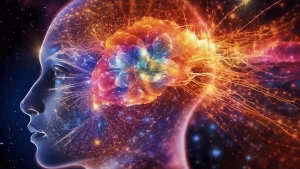
- Belief in Reincarnation: Reincarnation is a belief that suggests an individual’s consciousness or soul is reborn into a new body after death. This belief is commonly associated with religions like Hinduism, Buddhism, Jainism, and some New Age and spiritual belief systems.
- Variability of Belief: Not all cultures or belief systems accept the idea of reincarnation. Many major religions, such as Christianity, Islam, and Judaism, have different views on the afterlife that do not involve reincarnation.
- Karma and Reincarnation: In many belief systems that incorporate reincarnation, the quality of one’s rebirth is often believed to be influenced by their karma, which is the accumulation of their actions and deeds in previous lives. Good karma is associated with favorable rebirths, while negative karma may lead to less favorable ones.
- Lack of Scientific Evidence: Reincarnation is a belief that lacks scientific evidence, and it is considered a matter of faith or spirituality rather than a scientifically proven phenomenon.
- Personal Beliefs: Whether or not an individual believes in reincarnation depends on their personal beliefs, cultural background, and religious or philosophical convictions. It’s a deeply subjective matter, and beliefs about the afterlife and reincarnation can vary widely from person to person.
What Does Science Say?
The notion of reincarnation has been met with intriguing evidence that lends partial support to its plausibility. The phenomenon of children as young as three years old recalling intricate details about their past lives—ranging from their whereabouts to their experiences and even the circumstances of their death—presents a compelling puzzle that finds some explanation in the concepts of reincarnation or rebirth.
Other fascinating aspects of evidence include xenoglossy, where individuals display the ability to speak languages they have never formally learned, and instances where individuals bear birthmarks or scars that seem to correlate with experiences from their past lives.
In both cases, the complexities and limitations of human understanding and scientific exploration urge us to consider the possibility of phenomena that might extend beyond our current grasp. The evidence that does exist, albeit not conclusive, invites us to approach these concepts with an open mind, acknowledging the potential for realities that transcend our current comprehension.
Tukdam Meditation
Tukdam meditation is one of the most advanced and profound forms of Buddhist practice. It means to hold the mind. Tukdam is a deep meditative state that begins at the time of death and can continue for several weeks after the physical body dies. It is the ultimate process of inner dissolution of the five elements and consciousness into clear light.
What are the signs that the practitioner is in Tukdam meditation state?
Some practitioners and accomplished masters pass away while maintaining an upright posture in the meditation position, while others adopt the “posture of the sleeping lion.” Besides their perfect poise, there will be other signs that show they are resting in the state of the Ground Luminosity: There is a certain color and glow in their face, the nose does not sink inward, the skin remains soft and flexible, the body does not become stiff, the eyes are said to keep a soft and compassionate glow, and there is still a warmth at the heart. Great care is taken that the master’s body is not touched, and silence is maintained until he or she has arisen from this state of meditation. In Vajrayana Buddhism, it is a common practice to preserve the bodies of revered teachers in the lotus position and protect them with salt. Many Dalai Lamas have been preserved in this manner and are currently housed in the Potala Palace in Lhasa.
Watch the full video about Tukdam meditation on our YouTube Channel:
Rebirth VS Reincarnation
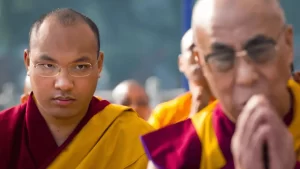
The Karmapa and HH the Dalai Lama
Rebirth refers to the continuity of the subtle consciousness after the physical body’s demise. This consciousness can take on a new form, whether as a human or any other sentient being, influenced by the karma generated in the preceding life.
Crucially, rebirth diverges from reincarnation. Reincarnation often incorporates the belief in a soul (atman) being reborn, a perspective commonly found in Hinduism. In contrast, rebirth in Buddhism pertains to the continuum of consciousness, energy, or the mind stream.
Central to Buddhist doctrine is the absence of a permanent, unchanging entity. The entirety of existence, encompassing consciousness, sensations, bodies, perceptions, and volitions, is in perpetual flux. The notion of a self is an illusion; rather, the world exists within our minds, not the other way around.
Reincarnation of High Lamas in Tibet
The practice of discerning a person’s past life, even in the time of Shakyamuni Buddha, is evident in historical records. Numerous instances are documented across various sources, including the Agama Sections of the Vinaya Pitaka, the Jataka Stories, the Sutra of the Wise and Foolish, as well as the Sutra of One Hundred Karmas. Within these texts, the Tathagata, or Buddha, expounded the intricate workings of karma, relaying countless narratives that illustrate how the consequences of past karmic actions shape an individual’s experiences in their present life.
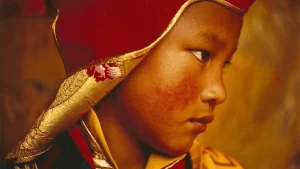
Young 17th Karmapa
Furthermore, the life stories of post-Buddha Indian masters continue to unveil their past places of birth, offering further testament to this practice. These narratives are rich and diverse, underscoring the interconnectedness of lives across time.
The ways of recognizing reincarnations
The inception of recognizing Tulkus introduced a spectrum of evolving procedures that gradually took shape. Among these, several pivotal methods gained prominence, contributing to the nuanced process of identification:
-
- Predecessor’s Predictive Letter and Instructions: A significant avenue involves instructions left by the predecessor before their passing, which might indicate the circumstances of their future rebirth. These written prophecies provide valuable insights for seekers.
- Reincarnation’s Own Recollections: The reincarnation often plays a central role by vividly recounting memories and details from their past life, thereby offering an authentic testimony of their continuity.
- Recognition of Possessions and Associates: The identification of belongings that belonged to the previous incarnation can offer compelling evidence. Additionally, recognizing individuals who shared close relationships with the predecessor can provide further validation.
- Divination by Spiritual Masters: Seekers might consult accomplished spiritual masters for their divinatory insights, drawing upon their heightened intuition and connection to spiritual realms.
- Mundane Oracles and Sacred Lakes: Divination from mundane oracles, individuals in trance who channel divine wisdom, can guide the recognition process. Additionally, visions appearing in sacred lakes, like Lhamoi Latso south of Lhasa, hold significance.
In instances where multiple candidates vie for recognition as a Tulku, and resolution becomes intricate, the practice of resorting to divination employing the “dough-ball method” (zen tak) before a sacred image is invoked. This practice, rooted in calling upon the power of truth, aids in making the ultimate decision.
Full Video on Karmapas Controversy
Tulku VS Rinpoche
Rinpoches, an honorary title meaning “precious ones,” hold a revered status as senior lamas or head lamas within monasteries. Often regarded as the reincarnations of the monastery’s founding lama, these individuals, typically initiated from childhood, undergo rigorous training in Buddhist studies, practices, and rituals. Upon completing their training, they assume the responsibilities of their predecessor, embodying a common succession practice within Tibetan Buddhism.
In certain cases, exceptional practitioners receive the honorific title of Rinpoche later in life to acknowledge their accomplishments, with many eventually being recognized retroactively as tulkus. Distinguished from the title “lama,” signifying a teacher, which is bestowed following a comprehensive course of meditation, study, and retreat, Rinpoches frequently enjoy a higher level of comfort and luxury than other monks. This distinction extends to their seating arrangements, as they often sit on cushions elevated above others.
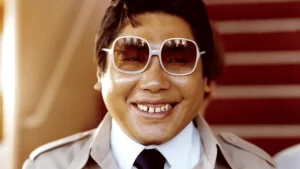
Chögyam Trungpa Rinpoche
Rinpoches, revered as holy figures who transcend the monk status through reincarnation, bear similarities to bishops within the context of priests. Notably, the Dalai Lama holds a significant position as a prominent figure often referred to as a super Rinpoche.
The process of identifying a tulku involves distinct methods. From recognizing religious artifacts within a group to identifying specific individuals in crowds, these indicators, often accompanied by auspicious signs, contribute to the validation of a tulku’s rebirth.
Moreover, tulku candidates might recount vivid memories of their past life from an early age, bolstering their claims. Specific birth circumstances, like being born with the umbilical cord resembling monk’s robes, are also considered potent signs.
Communities of learned monks play an active role in confirming a tulku’s identity. Books outlining auspicious dates offer an additional layer of validation. In cases where there are competing candidates, the dough-ball divination method before a sacred image is utilized for resolution.
Tulkus are Tibetan Buddhist lamas who have taken the Bodhisattva vow, committing to assist all sentient beings in escaping suffering. This conscious commitment to reincarnate is a means of perpetuating specific lineages. This concept, unique to Tibetan Buddhism, took shape during the twelfth to fourteenth centuries as different Tibetan schools embraced the idea of compassionate teachers returning across lifetimes.
The identification and education of tulkus are intricate processes. Upon a tulku’s passing, esteemed lamas convene to search for the successor, often interpreting messages left behind by the deceased. Mystical signs, such as dreams, may also guide the search. Tulkus are typically recognized in childhood, separating from their families to be raised in monasteries under the guidance of teachers and attendants. This upbringing, though solitary, is imbued with devotion and care.
Tulkus are often termed “reincarnated” masters, yet it’s crucial to note that this doesn’t imply a reborn soul, as Buddhism posits the absence of a permanent soul. Instead, tulkus are considered embodiments of enlightened masters in nirmanakaya form.
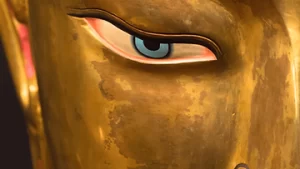
Amidst these intricate layers, it’s vital to distinguish between “tulku” and “lama.” A tulku embodies a specific type of spiritual master committed to reincarnation, while a lama may or may not be a tulku.
The tulku tradition encompasses approximately 500 lineages spread across various regions, predominantly male, with some female lineages, upholding a unique facet of Tibetan Buddhist practice and belief.
How will the next Dalai Lama be chosen?
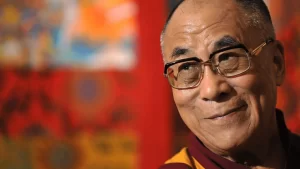
HH the Dalai Lama
The status of Tibet remains a contentious issue in the present day, particularly given the exile of the Dalai Lama, a key figure in Tibetan Buddhism. The succession of the Dalai Lama’s reincarnation, a matter that Beijing seeks to control, has the potential to spark global controversy.
Tibetan Buddhism is structured around four major schools: Nyingma, Kagyu, Sakya, and Gelug. Each of these schools operates independently, possessing its own monastic institutions and leadership.
The Dalai Lama, a prominent leader within the Gelug School, has significant influence in Tibetan Buddhism and has served as the former head of state in Tibet. However, it’s important to note that his authority doesn’t extend to the other three major Tibetan Buddhist schools—Sakya, Kagyu, and Nyingma—each of which maintains its own lineages of reincarnation.
Thus, the Dalai Lama, in isolation, lacks the power to unilaterally alter the tradition of recognizing reincarnate lamas within Tibetan Buddhism. In recent statements made during a gathering with students in Northern India, the Dalai Lama hinted that the time might be ripe for reevaluating the custom of recognizing reincarnate lamas.
The Dalai Lama’s remarks, conveyed through the Office of the Dalai Lama, suggest that the tradition of recognizing reincarnate lamas may have outlived its relevance. The Dalai Lama points out that the reincarnation system has never been an integral part of Indian Buddhist practices. Notably, great Indian Buddhist masters like Nagarjuna and even the Buddha himself are not associated with recognized reincarnations.
The process of selecting the next Dalai Lama could prove contentious, particularly due to China’s officially atheist government’s unusual interest in influencing this choice. China claims the authority to determine the next Dalai Lama, a stance that is met with resistance from Tibetan Buddhist religious authorities.
In 2015, the Tibet regional governor, Padma Choling, articulated the perspective that the decision regarding the continuation of reincarnation is not solely within the Dalai Lama’s jurisdiction. He emphasized that the selection of the 14th Dalai Lama followed a well-defined system guided by religious protocols, historical traditions, and government approval. Choling questioned the possibility of the Dalai Lama independently deciding to cease reincarnation.
In summary, the issue of the Dalai Lama’s reincarnation has profound implications, intertwining religious tradition, political power dynamics, and global attention, thus fueling ongoing debates and controversies.
• From the Dalai Lama official website
When asked what gets reborn, Buddhist teacher Chögyam Trungpa Rinpoche reportedly said, “Your bad habits.”

